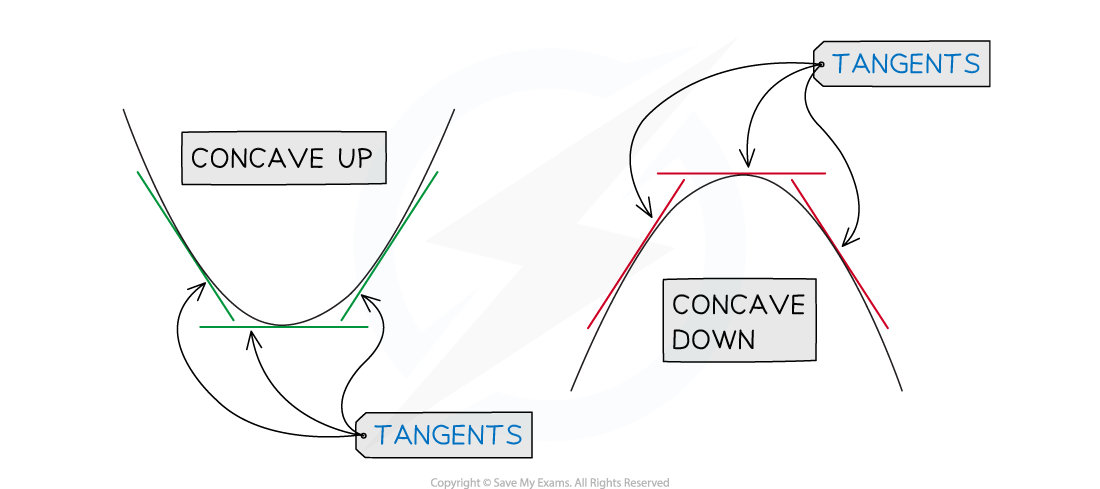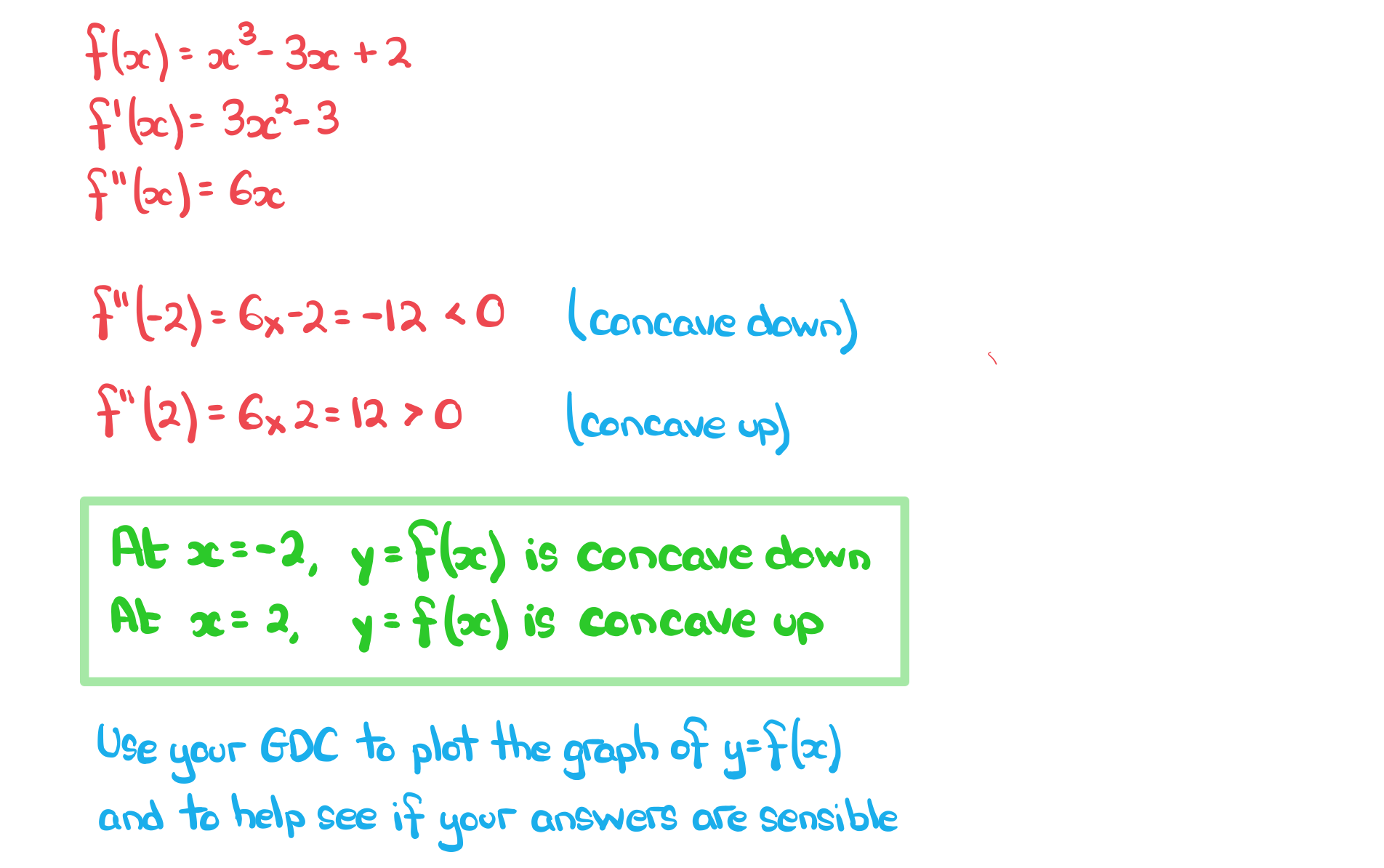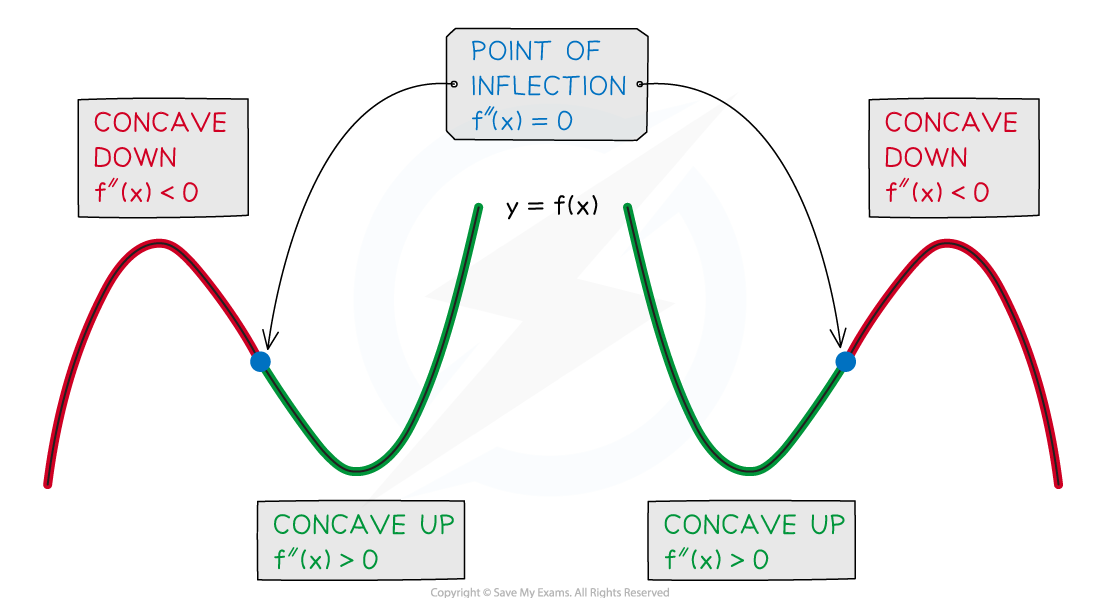Concavity & Points of Inflection (DP IB Analysis & Approaches (AA)) : Revision Note
Did this video help you?
Concavity of a Function
What is concavity?
Concavity is the way in which a curve (or surface) bends
Mathematically,
a curve is CONCAVE DOWN if
for all values of
in an interval
a curve is CONCAVE UP if
for all values of
in an interval

Examiner Tips and Tricks
In an exam an easy way to remember the difference is:
Concave down is the shape of (the mouth of) a sad smiley ☹︎
Concave up is the shape of (the mouth of) a happy smiley ☺︎
Worked Example
The function is given by
.
a) Determine whether the curve of the graph of is concave down or concave up at the points where
and
.

b) Find the values of for which the curve of the graph
of is concave up.

Did this video help you?
Points of Inflection
What is a point of inflection?
A point at which the curve of the graph of
changes concavity is a point of inflection
The alternative spelling, inflexion, may sometimes be used
What are the conditions for a point of inflection?
A point of inflection requires BOTH of the following two conditions to hold
the second derivative is zero
AND
the graph of
changes concavity
changes sign through a point of inflection

It is important to understand that the first condition is not sufficient on its own to locate a point of inflection
points where
could be local minimum or maximum points
the first derivative test would be needed
However, if it is already known
has a point of inflection at
, say, then
What about the first derivative, like with turning points?
A point of inflection, unlike a turning point, does not necessarily have to have a first derivative value of 0 (
)
If it does, it is also a stationary point and is often called a horizontal point of inflection
the tangent to the curve at this point would be horizontal
The normal distribution is an example of a commonly used function that has a graph with two non-stationary points of inflection
How do I find the coordinates of a point of inflection?
For the function
STEP 1
Differentiate twice to find
and solve
to find the
-coordinates of possible points of inflection
STEP 2
Use the second derivative to test the concavity of either side of
If
then
is concave down
If
then
is concave up
If concavity changes, is a point of inflection
STEP 3
If required, the-coordinate of a point of inflection can be found by substituting the
-coordinate into
Examiner Tips and Tricks
You can find the x-coordinates of the point of inflections of
by drawing the graph
and finding the x-coordinates of any local maximum or local minimum points
Another way is to draw the graph
and find the x-coordinates of the points where the graph crosses (not just touches) the x-axis
Worked Example
Find the coordinates of the point of inflection on the graph of.
Fully justify that your answer is a point of inflection.


You've read 0 of your 5 free revision notes this week
Unlock more, it's free!
Did this page help you?
